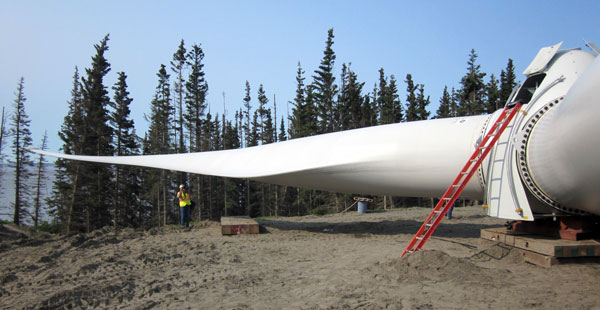
The Alaska Village Electric Cooperative is moving ahead with its plans to build a wind farm for St. Mary’s and Pitkas Point, after receiving the necessary funding through Fiscal Year 2016 state capital budget.
A $4.3 million appropriation of state money remained in the trimmed-down capital budget throughout the legislative session, even as other projects were cut.
AVEC President and CEO Meera Kohler says the money was never in serious jeopardy because it is actually a re-appropriation of money previously set aside for another project.
While waiting for the money to be delivered, Kohler and AVEC managers are hammering out some important details about the design of the wind farm.
“We haven’t decided exactly what wind turbines we are going to use,” Kohler said. “The plan is to use the Northwind 100-B, but we are also contemplating a larger machine. But we will have to make that decision by December of this year.”
The St. Mary’s wind farm has a proposed capacity of 400 kilowatts of electricity from four separate turbines. But even if the plans change to use larger turbines to create more electricity, Kohler is confident that any excess electricity won’t go to waste.
“There’s plenty of demand for electricity as heat to absorb the excess production, as long as we can do it for equal or less than what we budgeted for the smaller turbines, in terms of cost,” Kohler said. “So producing additional wind power is never really a significant deterrent”
A separate plan aims to connect the electrical grids of St. Mary’s and nearby Mountain Village, which would broaden the customer base benefitting from wind power.
St. Mary’s will still have to operate diesel generators to supplement the power coming from the wind farm, but Kohler predicts that AVEC members in that area will see lower utility bills as a result of the project.
AVEC estimates that wind power saves 25 to 35 cents per kilowatt-hour compared to diesel power.
Kohler expects the wind farm to be operational by the end of next year.
